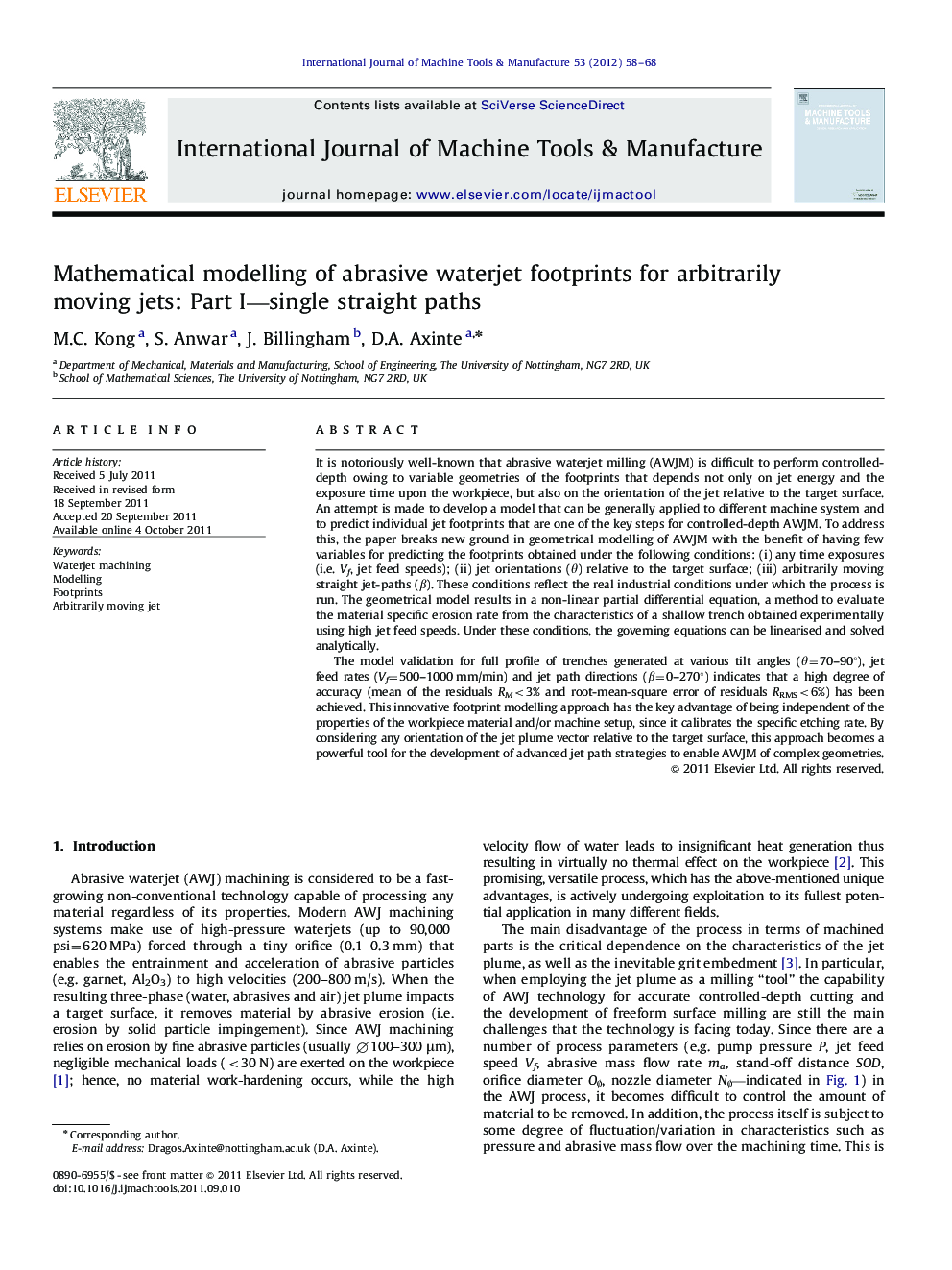| Article ID | Journal | Published Year | Pages | File Type |
|---|---|---|---|---|
| 781862 | International Journal of Machine Tools and Manufacture | 2012 | 11 Pages |
It is notoriously well-known that abrasive waterjet milling (AWJM) is difficult to perform controlled-depth owing to variable geometries of the footprints that depends not only on jet energy and the exposure time upon the workpiece, but also on the orientation of the jet relative to the target surface. An attempt is made to develop a model that can be generally applied to different machine system and to predict individual jet footprints that are one of the key steps for controlled-depth AWJM. To address this, the paper breaks new ground in geometrical modelling of AWJM with the benefit of having few variables for predicting the footprints obtained under the following conditions: (i) any time exposures (i.e. Vf, jet feed speeds); (ii) jet orientations (θ) relative to the target surface; (iii) arbitrarily moving straight jet-paths (β). These conditions reflect the real industrial conditions under which the process is run. The geometrical model results in a non-linear partial differential equation, a method to evaluate the material specific erosion rate from the characteristics of a shallow trench obtained experimentally using high jet feed speeds. Under these conditions, the governing equations can be linearised and solved analytically.The model validation for full profile of trenches generated at various tilt angles (θ=70–90°), jet feed rates (Vf=500–1000 mm/min) and jet path directions (β=0–270°) indicates that a high degree of accuracy (mean of the residuals RM<3% and root-mean-square error of residuals RRMS<6%) has been achieved. This innovative footprint modelling approach has the key advantage of being independent of the properties of the workpiece material and/or machine setup, since it calibrates the specific etching rate. By considering any orientation of the jet plume vector relative to the target surface, this approach becomes a powerful tool for the development of advanced jet path strategies to enable AWJM of complex geometries.
► The model shows a high degree of accuracy (rms error<6%) in predicting arbitrarily moving jetpaths. ► The approach has the advantage of being independent of the workpiece properties/machine setup. ► The model can help in defining the jetpath strategy for controlled-depth abrasive waterjet milling. ► Considering RM, RRMS and surface roughness, backward milling is more favourable than forward one for precision machining.
